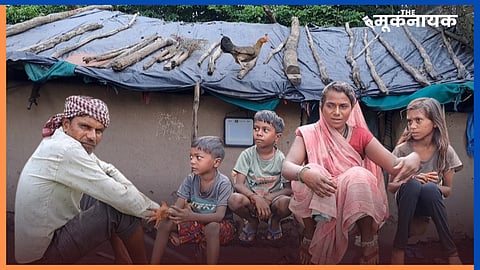
Bhopal/Dhar: This is the story of the farmers from the tribal-dominated Dhar district of Madhya Pradesh, who once witnessed greenery on their rocky soil. In the village of Bhandakho, fields that once thrived with cotton, maize, and wheat now stand barren. The night of August 14, 2022, changed their lives forever. The Karam Dam, which was a source of hope, suddenly became a cause of devastation. The water was so forceful that thousands of hectares of land were submerged, and when the waters receded, only rocky soil remained—unsuitable for any crop cultivation.
When the leaking waters from the Karam Dam engulfed Bhandakho and neighboring villages, no one could have imagined the horror that was about to unfold. The farmers had no idea that the very project meant to irrigate their fields would turn into their doom. Within 48 hours, 18 villages had to be evacuated. Hundreds of farmers fled their homes and fields to seek refuge in the hills. It wasn’t just a flood; it was the destruction of their future dreams. Three years have passed since the deluge, but the farmers' hardships have yet to be resolved. The Mooknayak’s ground report delves into every aspect of the pain suffered by these tribal farmers.
Kanti Bhil of Bhandakho village, a mother of three children, lives with her husband and in-laws. She now works as a laborer to support her family. Her 8 bighas of land, once lush with cotton and wheat, has turned into barren, rocky land. With a face marked by deep concern, Kanti says, "Our fields are now covered with rocks. We used to grow cotton, wheat, and maize. Now, there’s no soil left, no crops. To feed my family, I have to work as a laborer. The government only gave us ₹3,000 as compensation, which is nothing compared to our losses."
Kanti's husband, Shivam, also now works as a daily wage laborer instead of farming. He remarks, "We never imagined that the dam, which was supposed to provide water for irrigation, would become the cause of our ruin. It’s no longer possible to work on the fields because they are covered with rocks and stones. We are demanding compensation from the government and asking them to make the land fertile again, but so far, we’ve only received empty promises."
Another farmer from Bhandakho, Mukesh, whose 10 bighas of land turned completely barren after the dam leak, expresses his helplessness, saying, "The soil from our fields washed away. Now, only rocks remain. Government officials came and made promises, but we received no relief. They tried to silence us by giving just ₹5,000 as compensation. Our demand is simple: either return our land to us or make it fertile again."
Following the disaster, about 100 to 150 villages in the Dharampuri assembly constituency were submerged. The local administration attempted damage control, but by then, it was too late. The fertile soil had eroded, and the land that remained after the flood was rocky, making it impossible to grow crops. Many farmers, who once owned hundreds of bighas of fertile land, are now forced to live as laborers.
The government had promised relief. During the flood, the then Minister of Industry Rajyavardhan Singh Dattigaon and the Minister of Water Resources, Tulsi Silawat, visited the affected villages. On August 15, 2022, while hoisting the flag on Independence Day, the Water Resources Minister promised the villagers that their fields would be made fertile again and that they would receive compensation. However, even after three years, the farmers are still waiting.
Congress leader and former MLA from Dharampuri, Panchilal Meda, told The Mooknayak’s correspondent, "This dam was built at a cost of ₹300 crore, but there was massive corruption. Why did the dam collapse? And how did the government give a clean chit to the officials and contractors? Farmers have not received compensation, and their land has turned barren. This happened solely due to government corruption."
Meda further added, "When the dam collapsed, ministers came and promised compensation, but no concrete action has been taken so far. The farmers are still struggling with their barren land and shattered hopes."
The farmers' hopes from the government seem to be fading. The fields that once fed them and their families have now turned into rocky wastelands. The farmers say that if the government doesn’t make their fields fertile again soon, they will be forced to migrate.
The Mooknayak’s representative spoke to Dhar Collector Priyank Mishra (IAS) about the situation. He responded, "I am not currently aware of this matter. Since you have brought it to our attention, we will direct the concerned department to investigate the area."
The hundreds of farmers in Bhandakho and Dhar district are now asking the government—will we get our land back? Will we ever see our fields green again? Or will this rocky earth become our destiny forever?
You can also join our WhatsApp group to get premium and selected news of The Mooknayak on WhatsApp. Click here to join the WhatsApp group.